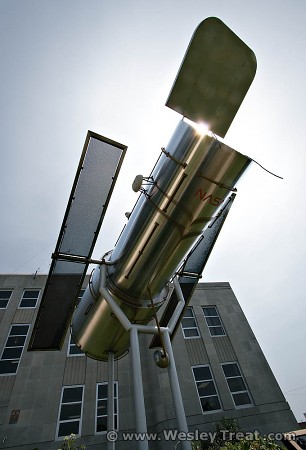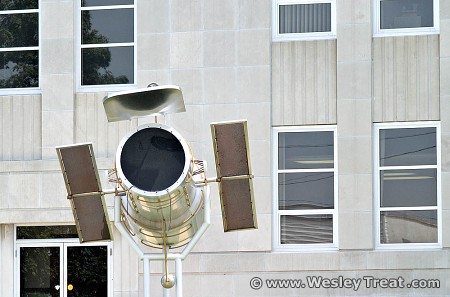As difficult as it might be to fathom, man still believed right up into the 1920s that the universe didn't extend beyond our own Milky Way Galaxy. Not only were the Solar System and all visible stars a part of it, but scientists in general believed that all the objects viewable with even the most powerful telescopes were part of our own galaxy, as well. Astronomers had already spotted other galaxies, but these were generally determined to be nebulae — clouds of dust and gas — that were presumed to lay within the Milky Way along with everything else.
In 1925, that view changed, and in a big way. After spending countless hours peering through an eyepiece atop California's Mount Wilson, a little-known astronomer named Edwin Powell Hubble publicly concluded that the universe was far more vast than previously accepted. Those supposed nebulae, he determined, were entire galaxies unto themselves, some more massive than our own, and were very, very far away. Hubble had realized that the cosmos was not just big — it was really, really big. Bigger, perhaps, than the mind could even grasp.
He also determined, with an intellect that could easily make the rest of us look like contestants on Deal or No Deal, that Einstein’s equations of general relativity for a homogeneous, isotropic expanding universe held true. In other words, not only was space big, but it was getting bigger. By measuring wavelengths of light from celestial bodies, he was able to show that galaxies were spreading outward in a way that supported the then-emerging Big Bang theory. Thanks to Hubble, our understanding of creation made enormous leaps.
Yet, despite his accomplishments, your average Joe hadn't heard of the man until around 1990. That's when the much-anticipated Hubble Space Telescope was launched into orbit, promising new and extraordinary views into deep space. Unfortunately, the name Hubble quickly became synonymous with colossal failure when the most celebrated astronomical instrument in history and the poster child for NASA was discovered to work about as well as a carnival photo booth. But, thankfully, technicians were able to fix it, and the HST's unprecedented imagery made possible some of astronomy's greatest leaps forward and turned the scope into a fitting tribute to its namesake.
Nevertheless, anyone who might wish to pay personal homage to the great astronomer had no terrestrial focal point to direct his admiration. There was the satellite, a moon crater and an asteroid all named in his honor, but Earth itself was devoid of Hubble shrines. In fact, when Hubble died in 1953, not only was there no funeral, but his wife refused to reveal what was done with his body, so there's not even a gravesite to visit.
As a result, Hubble's hometown of Marshfield, Missouri, took it upon themselves to correct the situation. They would build their own shrine, a suitable memorial that could stand in the center of town and properly honor their local hero. Rather than create a plaque or some type of cenotaph, though, officials instead looked to the sky. In 1994, they erected on the courthouse lawn a 1/4-scale replica of the eponymous Hubble satellite in stainless steel. Sort of a tribute to a tribute, like a memorial once removed.
Sure, they could have gone with a statue of Hubble himself, but we think it's reasonable to say they went with the safer, more recognizable option. Makes for a better postcard, too.





